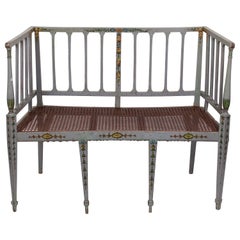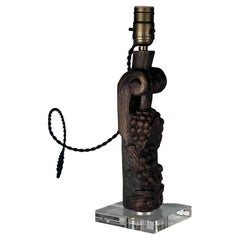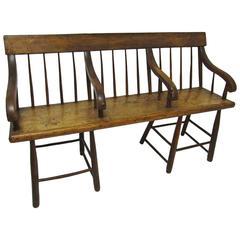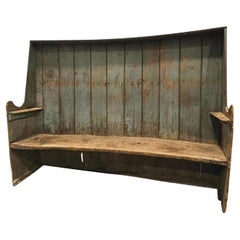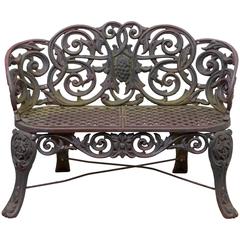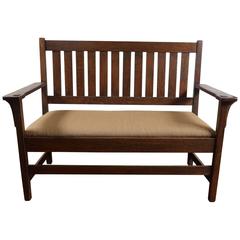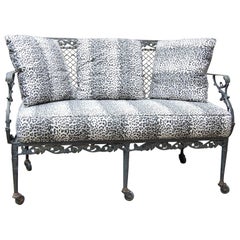Early American Settee
Antique Early 19th Century South American William IV Settees
Mahogany
Antique 19th Century American American Colonial Benches
Wood
Antique Early 19th Century Italian American Classical Table Lamps
Wood
Antique Early 19th Century American Federal Settees
Early 20th Century American Settees
Wood
Early 20th Century American Late Victorian Patio and Garden Furniture
Early 20th Century American American Craftsman Benches
Oak
Early 20th Century American American Craftsman Sofas
Upholstery, Wood
Early 20th Century American American Classical Patio and Garden Furniture
Iron
Early 20th Century American American Classical Settees
Velvet, Mahogany
Early 20th Century American Mission Settees
Upholstery, Wicker
Early 20th Century American Chippendale Settees
Upholstery, Walnut
Early 20th Century American Arts and Crafts Settees
Early 20th Century American Settees
Oak
Antique Early 19th Century American Federal Settees
Mahogany
Early 20th Century North American Regency Settees
Gesso, Silk, Upholstery
Antique Early 19th Century American Federal Settees
Mahogany
Antique Early 19th Century American American Empire Settees
Upholstery, Mahogany
Early 20th Century American Empire Living Room Sets
Mahogany, Upholstery
Early 20th Century American Country Painted Furniture
Antique Early 19th Century American Federal Sofas
Brass
Antique 19th Century American American Classical Benches
Oak
Antique 19th Century American Sheraton Benches
Early 20th Century American American Classical Sofas
Fabric, Mahogany
Antique Late 18th Century American American Classical Settees
Pine, Faux Bamboo, Oak
Early 20th Century American American Colonial Painted Furniture
Pine
Antique Early 19th Century American American Colonial Benches
Cherry
Early 20th Century American Primitive Settees
Early 20th Century American Settees
Early 20th Century American Adirondack Settees
Cedar
Antique 18th Century and Earlier American Federal Settees
Early 20th Century American American Craftsman Settees
Reed, Wood, Paint
Antique 18th Century and Earlier American Sofas
Antique Early 19th Century American Country Benches
Ash, Pine
Early 20th Century American Sofas
Reed, Paint, Wood
Early 20th Century American American Classical Sofas
Fabric
Early 20th Century American American Classical Sofas
Fabric
Early 20th Century American American Empire Chairs
Silk, Wood
Early 20th Century American American Classical Sofas
Fabric
Early American Settee For Sale on 1stDibs
How Much is a Early American Settee?
Finding the Right Seating for You
With entire areas of our homes reserved for “sitting rooms,” the value of quality antique and vintage seating cannot be overstated.
Fortunately, the design of side chairs, armchairs and other lounge furniture — since what were, quite literally, the early perches of our ancestors — has evolved considerably.
Among the earliest standard seating furniture were stools. Egyptian stools, for example, designed for one person with no seat back, were x-shaped and typically folded to be tucked away. These rudimentary chairs informed the design of Greek and Roman stools, all of which were a long way from Sori Yanagi's Butterfly stool or Alvar Aalto's Stool 60. In the 18th century and earlier, seats with backs and armrests were largely reserved for high nobility.
The seating of today is more inclusive but the style and placement of chairs can still make a statement. Antique desk chairs and armchairs designed in the style of Louis XV, which eventually included painted furniture and were often made of rare woods, feature prominently curved legs as well as Chinese themes and varied ornaments. Much like the thrones of fairy tales and the regency, elegant lounges crafted in the Louis XV style convey wealth and prestige. In the kitchen, the dining chair placed at the head of the table is typically reserved for the head of the household or a revered guest.
Of course, with luxurious vintage or antique furnishings, every chair can seem like the best seat in the house. Whether your preference is stretching out on a plush sofa, such as the Serpentine, designed by Vladimir Kagan, or cozying up in a vintage wingback chair, there is likely to be a comfy classic or contemporary gem for you on 1stDibs.
With respect to the latest obsessions in design, cane seating has been cropping up everywhere, from sleek armchairs to lounge chairs, while bouclé fabric, a staple of modern furniture design, can be seen in mid-century modern, Scandinavian modern and Hollywood Regency furniture styles.
Admirers of the sophisticated craftsmanship and dark woods frequently associated with mid-century modern seating can find timeless furnishings in our expansive collection of lounge chairs, dining chairs and other items — whether they’re vintage editions or alluring official reproductions of iconic designs from the likes of Hans Wegner or from Charles and Ray Eames. Shop our inventory of Egg chairs, designed in 1958 by Arne Jacobsen, the Florence Knoll lounge chair and more.
No matter your style, the collection of unique chairs, sofas and other seating on 1stDibs is surely worthy of a standing ovation.
- 1stDibs ExpertNovember 13, 2024To identify early American furniture, you can evaluate your piece on your own or seek the opinion of a certified appraiser or experienced antique dealer. Although many pieces from the Colonial era are unmarked, double-checking your furniture for signatures, stamps and labels is still a good first step. Using trusted online resources, you can research any markings to determine if the maker was active in America during the 16th and early 17th centuries. When identifying unmarked furniture, it's generally necessary to consider the style and details of the piece. Due to its handcrafted origins, early American furniture tends to have visible tool marks and irregularities in its carvings. Early American furnishings tended to be simple in style but often had one or two refined details, such as cabriole legs. Looking at images of authentic early American furniture can be helpful when making an identification. On 1stDibs, find a collection of 18th-century American furniture.
- 1stDibs ExpertSeptember 23, 2024The early American furniture style is often called the Colonial style. During the 17th century, American craftsmen drew inspiration from medieval and Renaissance furniture. By the 18th century, the William and Mary style that had emerged in England began to heavily influence the American Colonial style. Characteristics of Colonial-style furniture include turned legs, ornamental carvings and richly finished cherry, walnut and mahogany wood. On 1stDibs, shop a selection of Colonial-style furniture.
Read More
20 Inviting Dining Rooms Perfectly Arranged for Entertaining
Top interior designers show — and tell — us how to create delectable spaces for hosting dinner parties.
Nobody Puts This Sunny Sofa in a Corner
With its plush cushions, cane details and dazzlingly colorful back, it’s inviting from every angle.
The 21 Most Popular Mid-Century Modern Chairs
You know the designs, now get the stories about how they came to be.
Fred Rigby’s Modular Seating Can Be Configured in So Many Handy Ways
The plush Cove Slipper 2.5 Seater sofa is just one of many convenient combinations from the London-based maker.
This Chubby-Chic Quilted Stool Stands on Its Own Two Feet
Sam Klemick's cool stool is edgy, cozy and environmentally sustainable all at once.
Is Lionel Jadot the Willy Wonka of Upcycled Belgian Design?
From his massive collaborative workshop in a former paper factory, the designer concocts funky furniture from disused materials, as well as luxe hotel interiors like the new Mix Brussels.
Rock Your Cares Away on This Sunny Hand-Crocheted Swing
The boho-chic Enchanted Forest Swing, handmade by marginalized women from Turkey and Syria, is uplifting in every way.
Learn Why Designer Maarten Baas Set This Charles Rennie Mackintosh Chair on Fire
What happens when you do something to a piece of furniture that you shouldn’t? It becomes an entirely new object.

